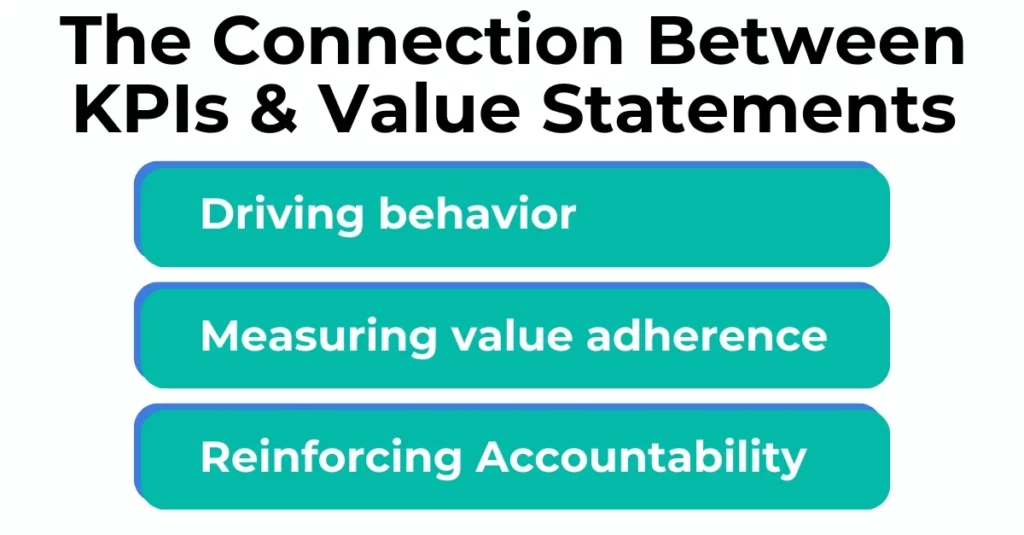Key Takeaways
- While key performance indicators show what you’re measuring and how to achieve your goals, value statements provide the motivation behind the metrics.
- A practice’s value statements and the bottom line should connect directly.
- Consider your practice’s values not just when optimizing processes, but also when identifying tech solutions to simplify them.
Key Performance Indicators (KPIs) show what you’re measuring, and with the right steps, they outline how to achieve your goals. But a values statement—the why behind your practice—provides the foundation.
Well-articulated values set the table for the rest of your practice’s KPIs to fall in place. While achieving the right metrics drives your practice toward success, understanding your “why” enables you to assemble the engine to get you to more efficient practice management.
How do Value Statements Relate to KPIs?
Value statements aren’t just ideals on paper. They define what your organization stands for and your commitments to patients, employees, and surrounding community. By setting the tone for culture and decision-making, these values ensure that every action you take aligns with a greater mission—making KPIs not just targets, but true reflections of your practice’s core purpose.
Relationship Between Value Statements and KPIs in Private Practice Management
Upon first impression, your practice’s bottom line might not seem to have much to do with your value statements. But nothing could be further from the truth. In fact, they should connect in several ways:
- Driving behavior: By setting KPIs that are aligned with value statements, organizations can encourage behaviors and outcomes that are consistent with their values. For instance, a value statement focused on innovation might lead to KPIs that measure the number of new services offered or the percentage of revenue from new services.
- Measuring value adherence: KPIs help measure how well the organization lives up to its value statements. They translate abstract values into concrete, calculable actions that can be tracked and improved.
- Reinforcing accountability: KPIs provide a way to hold the organization accountable to its values. If a value statement emphasizes high-quality care, KPIs might include metrics on experience, outcomes, and satisfaction—ensuring that the organization’s operations align with its stated commitment to patients.

How Values Statements Connect to Your EHR Selection
Creating a values statement requires thinking through which behaviors you want to amplify—and which ones you’re aiming to minimize. Let’s look at this through the lens of clinical processes, specifically EHR systems.
Data entry burden in EHR workflows is a top contributor to physician burnout. This task isn’t why physicians trained for years, yet it consumes a large portion of their time during patient care. Reducing these routine to-dos systematically supports a core value: minimizing distractions that pull focus from patient care.
No patient seeks a physician for their charting skills. Patients value empathy, listening, medical expertise, and the ability to understand their story. These essential skills don’t need hours of data entry; they need focus and context. Yet, physicians often spend more time gathering and entering data than exercising the judgment on which their patients rely.
A values statement that could emerge from this discussion might be: “To systematically eliminate routine EHR tasks that consume valuable time, allowing more space for medical judgment, skill, and patient interaction.” This mission drives automation efforts like templated content—freeing physicians from routine tasks and creating room for what truly matters.
Why is this a powerful values statement? Because time-consuming, repetitive activities are measurable and can be modified. With this foundation, practice improvements can translate into clear KPIs that focus on reducing unnecessary data entry and making time for top-of-license patient care.
Of course, this is just one example. You might emphasize “quality care” or “reducing medical errors.” But without freeing up physician time, other values often become harder to achieve.
Creating structure, focus, and priority when fulfilling your value statement
If you feel your time isn’t being used to its fullest to uphold your values, consider: what systems, tasks, or behaviors could be refined or eliminated? What routine actions with each patient might be eating up valuable time without truly adding to the quality of care?
The following activities are part of each outpatient encounter across all specialties and worth examining:
- Medication:
- Medication list creation and reconciliation
- Electronic prescribing (ERx)
- Laboratory:
- Laboratory orders
- Laboratory results
- Patient education and repeated patient education and communication activities
- Patient narrative history (history of present illness and ROS)
- Chart preparation when there were prior encounters
To assess the impact of these factors, you can apply a common set of questions:
- Can any activities be improved through automation?
- Can supporting office staff enter any of this data?
- Can any of this information be entered by the patient?
- Can some of the activities of data collection and entry occur before the patient walks into the office or after the patient leaves?
- How will automated check-in, a patient portal, or pre-encounter and post-encounter communications play a role in easing the charting burden?
Reflecting on these questions breaks through the inertia of the way things have always been done. Routine can be hard to disrupt—changing processes, shifting behaviors, and building supportive tech requires real effort. But a strong values statement, grounded in clear principles, acts as a guiding light—reminding us of our purpose and why change matters.
Bring Values and KPIs Closer With Practice Management Services
Most physicians recognize the value of prioritizing their time through technology and streamlined processes. Yet some straightforward goals remain just out of reach due to system-level challenges—like team dynamics, workflow design, and tech stacks that aren’t set up or utilized to their full potential. Achieving an optimized, efficient practice requires not only the right tools, but also strong leadership and focused management to align everyone toward the same goals.
When issues related to reliability, efficiency, and simplicity aren’t addressed, they often lead physicians to fall back on old habits—such as entering all clinical data themselves during the patient encounter. It’s the familiar response: “If I can’t trust automation, the system, or my team to make sure this information gets documented accurately, I’ll just handle it myself.”
Explore Our Practice Management Solutions









